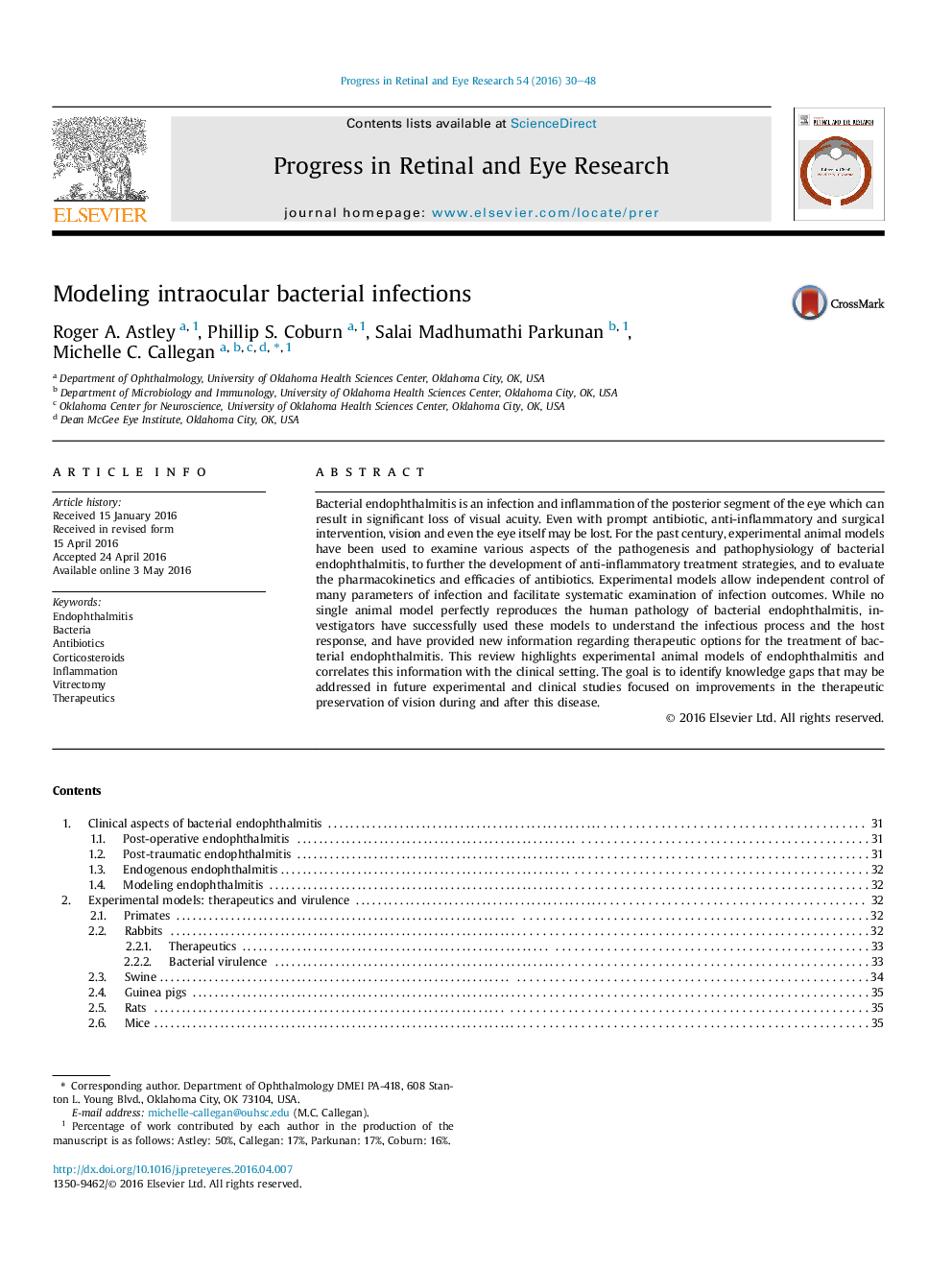| Article ID | Journal | Published Year | Pages | File Type |
|---|---|---|---|---|
| 4031883 | Progress in Retinal and Eye Research | 2016 | 19 Pages |
•Endophthalmitis is an infection/inflammation of the eye that can result in blindness.•Endophthalmitis models mimic the behavior of the infecting organism in human eyes.•Endophthalmitis models mimic the host response to infection in human eyes.•These models are used to analyze pathogenesis and treatment efficacy during infections.•These models provide a controlled environment which can be analyzed for statistical significance.
Bacterial endophthalmitis is an infection and inflammation of the posterior segment of the eye which can result in significant loss of visual acuity. Even with prompt antibiotic, anti-inflammatory and surgical intervention, vision and even the eye itself may be lost. For the past century, experimental animal models have been used to examine various aspects of the pathogenesis and pathophysiology of bacterial endophthalmitis, to further the development of anti-inflammatory treatment strategies, and to evaluate the pharmacokinetics and efficacies of antibiotics. Experimental models allow independent control of many parameters of infection and facilitate systematic examination of infection outcomes. While no single animal model perfectly reproduces the human pathology of bacterial endophthalmitis, investigators have successfully used these models to understand the infectious process and the host response, and have provided new information regarding therapeutic options for the treatment of bacterial endophthalmitis. This review highlights experimental animal models of endophthalmitis and correlates this information with the clinical setting. The goal is to identify knowledge gaps that may be addressed in future experimental and clinical studies focused on improvements in the therapeutic preservation of vision during and after this disease.
